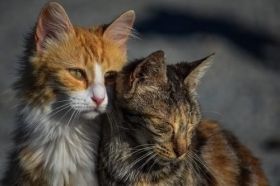Accurate numbers are the cat’s pyjamas when it comes to solving the current cat population crisis. But measuring the feline population has been difficult, until now.
University of Guelph scientists have developed a dynamic population model that crunches accumulated data from several sources to predict overall cat numbers in a community.
The promising new approach could improve the way urban cat populations are understood and managed in communities around the world.
“There seems to be a growing concern around trying to manage cats in cities, particularly outdoor and stray cats,” said Prof. Jason Coe, Department of Population Medicine. “Yet we have very few tools or methods that enable us to know what the population actually is or that help us understand how we might manage these populations.”
Continue reading at University of Guelph.
Image via University of Guelph.


